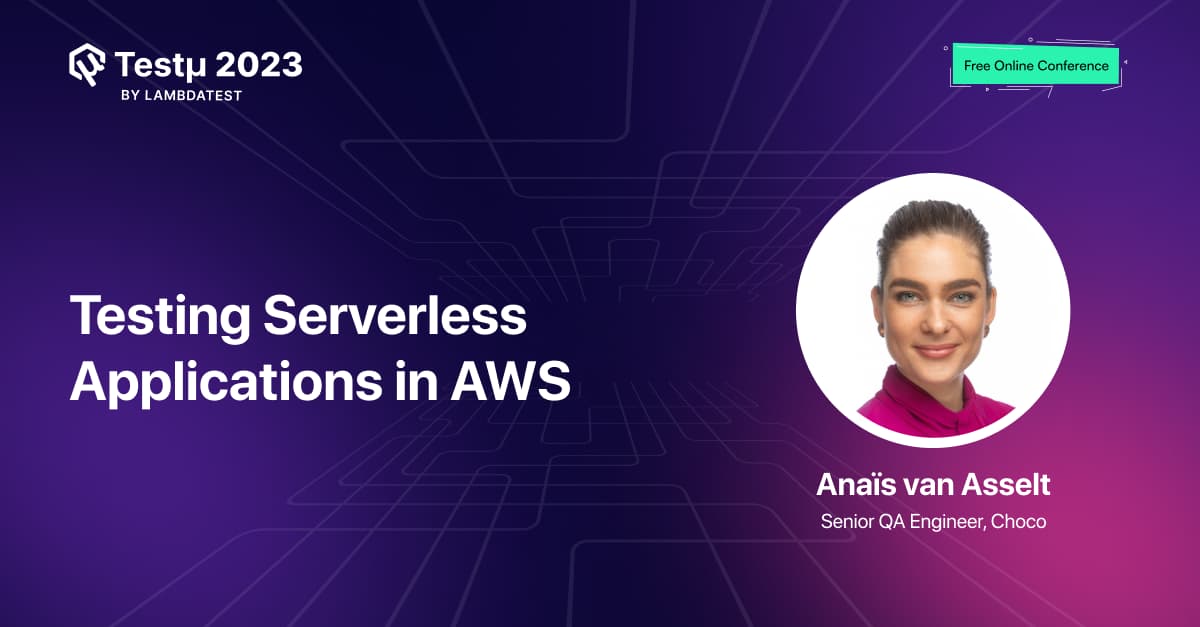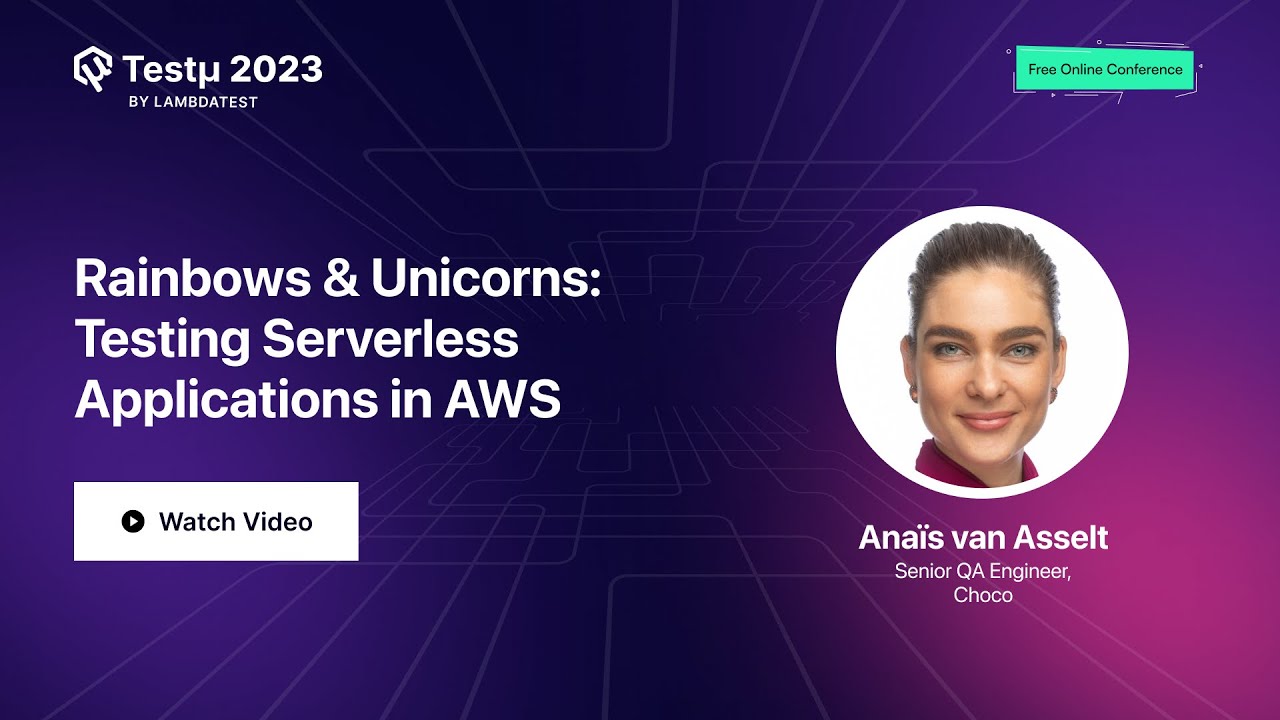
 Dive into AWS Serverless Testing!
Dive into AWS Serverless Testing!
Join Anaïs van Asselt to discover QA challenges in startups, demystify serverless testing complexities, and find the pot of gold in quality assurance. 
Still not registered? Hurry up and grab your free tickets: Register Now!
If you have already registered and up for the session, feel free to post your questions in the thread below 
Following are some of the Q&As from the session!
How do you balance the need for rapid development with maintaining a robust testing regimen, especially in the context of serverless applications?
Anaïs: It’s important to get fast feedback on the solutions you find and not be too long in the tunnel vision of your own solution. Talk about your ideas with developers and other people who can provide good feedback.
How can we handle end-to-end testing of serverless applications that involve multiple AWS services?
Anaïs: End-to-end testing can be challenging due to dependencies and asynchronous processes. It’s helpful to scope the end-to-end tests more and focus on one asynchronous flow or start with one surface and test the output. Integration tests and lambda tests can also be useful. It really depends on the context.
How do you thing AI will change the way we use cloud services and general testing?
Anaïs: AI can be helpful in automating tasks like bug assignment based on bug reports and team context. It can also assist in creating tests, but it’s important to use our own minds to determine the quality of these tests.
Here are some of the unanswered questions!
Can you elaborate on any specific testing techniques or tools your team employs to ensure the reliability of AWS Serverless systems?
Why is testing serverless applications different from testing traditional applications?
How API testing works with serverless application?
What tool is used to build locally test and package a serverless application?
Could you give a few real world examples for using serverless applications?
How do you scale up effectively a testing team with modern tools ?
How do you think AI will change the way we use cloud services and general testing?
What are the unique challenges and considerations when it comes to testing serverless applications in the AWS environment?
Could you elaborate on your approach to unit testing for individual serverless functions? Are there any best practices you follow?
Can you discuss your strategy for handling and testing the scaling behavior of your serverless components during high-demand periods?
What is the extent of testing required for a serverless application? Is functional testing the only aspect to be considered or are there other factors to be taken into account?
Are there any detailed documentations on testing with AWS?
Did you consider using contract testing in between different services?
Hi there,
If you couldn’t catch the session live, don’t worry! You can watch the recording here:
Additionally, we’ve got you covered with a detailed session blog:
Hi,
To ensure the reliability of AWS Serverless systems, our team employs a combination of testing techniques and tools. Firstly, we implement automated testing, including unit, integration, and end-to-end tests, using frameworks like AWS Lambda and AWS Step Functions to evaluate the functionality of our serverless applications.
We also utilize Chaos Engineering tools like AWS Fault Injection Simulator to proactively identify potential weaknesses and vulnerabilities within our serverless architecture. By injecting controlled faults and disruptions, we can assess how the system responds and ensure that it gracefully handles failures.
For performance testing, we use AWS X-Ray and CloudWatch to monitor and analyze system behavior in real-time, helping us identify performance bottlenecks and optimize resource allocation.
Additionally, our team conducts security testing using AWS Identity and Access Management (IAM) to set granular permissions and restrict access to resources, minimizing security risks.
Continuous monitoring and automated alerting are essential components of our strategy. AWS CloudWatch Alarms and AWS Lambda enable us to monitor system health, promptly detect any irregularities, and trigger automatic responses to mitigate potential issues.
Our approach combines these techniques and tools to maintain the reliability and resilience of our AWS Serverless systems, ensuring they perform optimally and securely in a dynamically changing cloud environment.
Testing serverless applications differs from testing traditional applications due to the unique nature of serverless architecture. In traditional applications, you have dedicated servers or virtual machines where you can install and configure your application and conduct various testing types. In serverless, there are distinct characteristics:
-
Scalability: Serverless platforms automatically scale resources up and down based on demand. This means that traditional load testing for capacity planning may not be as relevant, as the infrastructure scales dynamically.
-
Statelessness: Serverless functions are typically stateless, meaning they don’t maintain information between invocations. Testing for statelessness and ensuring that data persists correctly is crucial in serverless applications.
-
Event-Driven Nature: Serverless functions are often triggered by events. Testing these event triggers and the flow of data through the system is a critical aspect of serverless testing.
-
Cold Starts: Serverless functions may experience cold starts, which can impact performance. Testing under varying cold start conditions is important to understand the application’s responsiveness.
-
Dependency on Cloud Services: Serverless applications often rely on various cloud services. Testing these dependencies and their integration is vital.
To test serverless applications effectively, you need to adapt testing strategies and toolsets to account for these differences. Emphasis on statelessness, event-driven testing, and thorough integration testing with cloud services is crucial to ensure the reliability and performance of serverless applications.
![]()
![]() Dive into AWS Serverless Testing!
Dive into AWS Serverless Testing!![]()
![]()

